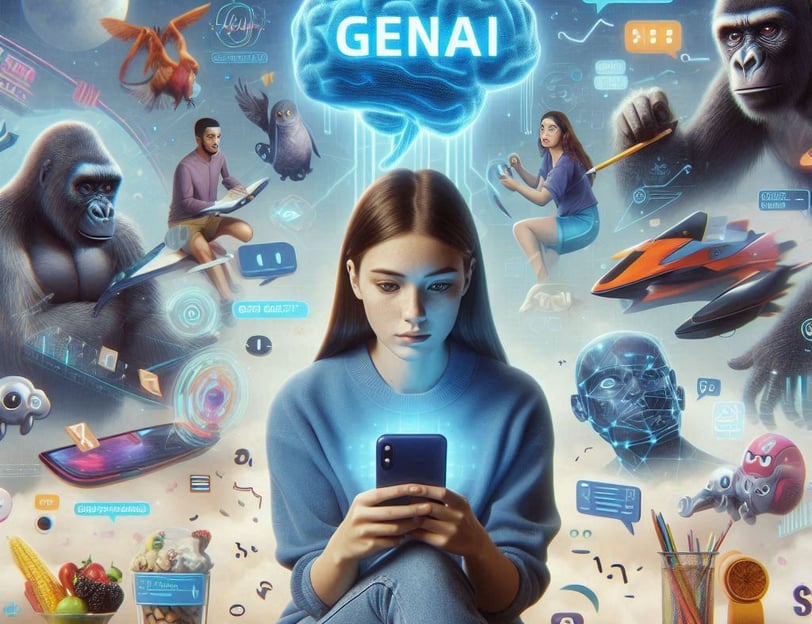Why GenAI is the Future: Understanding the Buzz Behind Text-to-Text, Text-to-Video, and More
In recent years, the tech world has been abuzz with terms like Generative AI (GenAI), Large Language Models (LLMs), and various text-to-X technologies. This surge in interest isn't just hype—it's a response to the transformative potential of these tools, even for industries that already possess sophisticated products and services. So, what’s driving this shift, and why should professionals and businesses pay attention?
Srinivasan Ramanujam
3/20/20252 min read
Why GenAI is the Future: Understanding the Buzz Behind Text-to-Text, Text-to-Video, and More
In recent years, the tech world has been abuzz with terms like Generative AI (GenAI), Large Language Models (LLMs), and various text-to-X technologies. This surge in interest isn't just hype—it's a response to the transformative potential of these tools, even for industries that already possess sophisticated products and services. So, what’s driving this shift, and why should professionals and businesses pay attention?
The Power of Generative AI: A Game-Changer for Innovation
Generative AI tools like OpenAI's GPT, Google's Gemini, and Anthropic’s Claude are redefining how businesses operate. Unlike traditional software that follows fixed logic, GenAI systems generate new content—be it text, images, videos, or code—based on user input.
This adaptability opens new possibilities across industries, even for companies that already have established products. The appeal lies in enhanced productivity, personalization, and creative automation.
Why Are Established Companies Embracing GenAI?
Even companies with mature products are turning to GenAI for several key reasons:
Enhanced User Experience
Example: Adobe integrated GenAI into Photoshop with its Generative Fill feature. Despite being a market leader in design tools, Adobe leveraged GenAI to enable users to manipulate images effortlessly using natural language prompts, improving workflow and attracting new users.
Faster Content Creation
Example: Canva added AI-driven design assistants, allowing users to generate complete layouts, templates, and presentations with minimal effort. This capability boosted productivity and simplified creative processes for non-designers.
Automation in Complex Workflows
Example: Salesforce introduced Einstein GPT to automate personalized email drafting, content generation, and customer insights. By integrating GenAI, Salesforce enabled sales teams to save time and focus on relationship-building.
Innovation in Marketing
Example: Coca-Cola partnered with OpenAI to create custom advertisements using text-to-video technology. This allowed rapid iteration of creative concepts tailored to different audience segments.
Improved Customer Support
Example: Duolingo integrated GPT-based chatbots to provide personalized language coaching. Despite being a well-established app, this GenAI feature improved engagement and retention.
Why Enroll in a GenAI Course?
The demand for GenAI expertise is rising as businesses increasingly adopt these tools. Learning GenAI concepts equips you to:
Understand core models like GPT, Stable Diffusion, and DALL-E.
Build solutions that automate content creation, improve personalization, and enhance customer interactions.
Stay competitive in industries where AI-driven innovation is becoming the norm.
Conclusion
GenAI is not just a passing trend—it's transforming how businesses create, market, and interact with customers. Whether you’re a professional looking to future-proof your career or a business aiming to innovate, investing in GenAI knowledge is a strategic move.
If you're ready to master this technology and lead in your field, enrolling in a GenAI course can give you the skills and insights you need to stay ahead.


